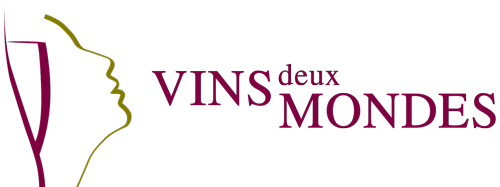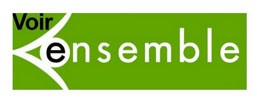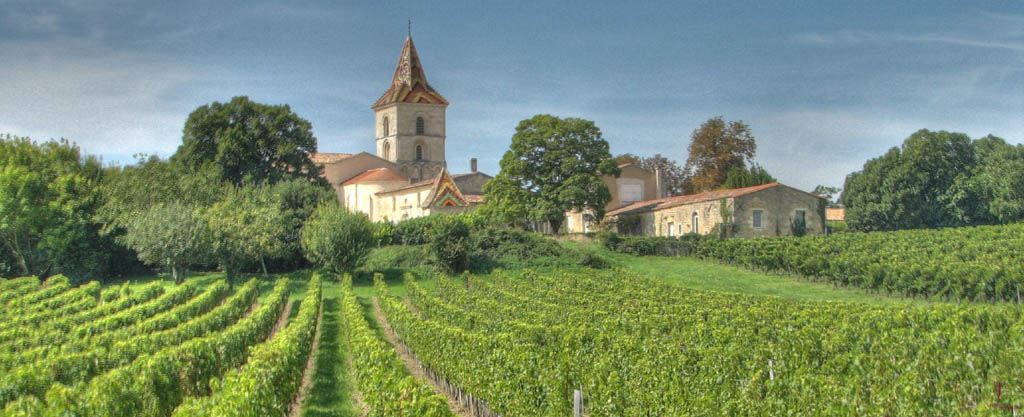
- MEDOC - HAUT MEDOC
- SAINT ESTEPHE - SAINT JULIEN - MARGAUX
- GRAVES / SAUTERNES
- ENTRE DEUX MERS
- SAINT EMILION / COTE CASTILLON - POMEROL / BLAYAIS
- BERGERAC
- GAILLAC
- MARCILLAC
- MADIRAN
- JURANCON
- COTE DE DURAS
VIGNOBLES JEROME BIBEY – Bégadan – Médoc 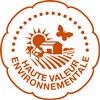
A desire to write a new page in the history of Chateau Pontet Barrail , to tell the story of this wine newly elected to the rank of Cru Bourgeois. To shake off the dust from this name so closely linked to this family history and make of it a true reference of quality, such are my objectives. The competence and knowledge of the team, which has proved itself with Chateau Labadie and the “Coupe des Crus Bourgeois” are the means at Jérôme Bibey’s disposal.
HAUT MEDOC
VIGNOBLES DEDIEU BENOIT – Cussac-Fort-Médoc
The lesser known commune of Cussac-Fort-Médoc was part of Saint-Julien until the early 1900’s with a pedigree to match. Fabrice Dedieu-Benoit is the 5th generation to look after this 6hectares family domain. The wines exert classic Bordelais refinement and elegance at very attractive prices. Wooden case is available.
Château Ségur de Cabanac www.segur-de-cabanac.com
Château Moulin de la Rose www.moulindelarose.com
The eight generation born into a wine grower family, Jean-Francois Delon-seconded by respected consultant Eric Boissenot -crafts excellent terroir—driven wines from his family properties; 7,07 ha in St Estèphe and 4,80 in St Julien.
Château Deyrem Valentin – Soussans- www.chateau-deyrem-valentin.com
Two sisters, Sylvie and Christel run with great enthusiasm this tiny 4 hectares domain in Margaux. This family domain trace its origins back to 1730 and enjoys the same soil geology of its illustrious neighbours… at a fraction of their prices!
A family domain in the heart of Graves aptly run by brothers Denis and Thierry Labuzan. Their white Graves is classic Graves with the qualities of both Semillon and Sauvignon being expressed both on the aromas and flavours. Their red is nicely consensual with its ripe fruits and soft integrated palate presence. This Château is constantly winning their customers heart with both colors being year after year rewarded by consumer recognition. In 2019 the domain was awarded HVE recognition.
High environmental value (HEV) corresponds to the highest level of a more general scheme of environmental certification for farms. This certification is a voluntary approach which aims to identify and promote particularly environmentally-friendly practices that cover four key areas: biodiversity conservation, plant protection strategy, management of fertiliser use and management of water.
VIGNOBLES MERCADIER – Sauterne – www.vignoblesmercadier.com
The Mercadier family used to own the renown Cru Chateau Suduiraut. Nowadays, they are looking after their other three smaller properties with the unique position that each of those three family domaines are in the best Sauternes communes, namely Preignac for Chateau de Veyres making wines from centenary old vines giving superb aromatic concentration, Barsac for Chateau Haut Cousteins exhibiting the nervosity and freshness associated with that commune and Fargues for Chateau Tuyttens offering a rapid dynamic profile and great equilibrium between sweetness and acid. All three properties are being given the same attention
CHÂTEAU JEAN FAUX – Sainte Radegonde 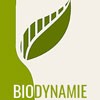
The vignobles is situated on the southern banks of the Dordogne river on slopes facing Castillon and Saint Emilion. Under the Collote family ownership since the early 2000’s, Pascal Collote was in a previous life part owner of a respected cooperage company. With his expertise and the desire to create wines of typicity they enrolled the expertise of reputed Stephane Derenoncourt consultancy and decided to create wines that express the typicity of the terroir. The Jean Faux name refers to the first local proprietor of the domain back in the 17th century. The wines are either Organic or Biodynamic certified.
Located in the heart of the Entre-Deux-Mers this domain makes wines by workers with sensorial disabilities (visual and hearing deficiencies). At a time when social inclusion and human respect is high on many agendas it is refreshing to hear of such initiatives. The domain is efficiently operated as part of an association created in 1947 to promote social integration and personal development through professional fulfilment.
The 20 hectare domain is composed of different parcels situated higher up on the property and made up of Sauvignon Blanc, Gris, Merlot Noir, Cabernet Sauvignon and Malbec. The vineyards are worked organically albeit not being certified.
The wines are made the traditional way with no unnecessary manipulation in the cellar and with low added sulfites as to better express the attributes of the varieties. A domain with a social vision that translates into an offering that has a sincere point of differentiation without compromising on the quality of the wines produced.
VIGNOBLES CAILLEUX – Escoussans
Château Haut-La Péreyre produced its first vintage in 1891 in the lieu-dit of Péreyre in the commune of Escoussans, Entre-Deux-Mers. Olivier Cailleux’s parents began estate bottling in 1974 (the wines used to be sold bulk before that time). Olivier himself took over from his father in 1994 after completing his enology studies and doing internships in South Africa, New Zealand, and at Cos d’Estournel. He is the sixth generation to produce wine at the family property that spans over 51 Ha. A different style of Vignobles Dubourg. Whilst both vignobles grow their vines sustainably and raise their reds in the tank to preserve primary fruits, here the reds display an aromatic profile of more atuned to graphite and earth. A different offering to please different palates.
VIGNOBLES DUBOURG – Escoussans
Brother and sister Benoit and Valérie Dubourg own and manage Château Nicot whose domain belongs to their family since 1871. The vineyards are to be found in the commune of Escoussans in the Entre-Deux-Mers and make for a pretty sight with gentle rolling slopes. The wines produced there offer an excellent and succulent expression of ripe fruits with supportive balanced tannins. The straight Bordeaux is a crowd pleaser made without artifice. The white is made from very old Sémillon vines.
SAINT EMILION
CHÂTEAU D’ARCOLE – Saint Emilion Grand Cru 
The château is named after the battle of Pont d’Arcole where Véronique’s ancestor Jean Barthe fought with Napoleon. On account of the fact that they were both married on the same day, Napoleon gave Jean some gold coins with which he bought his first vines in Bordeaux and Chateau d’Arcole was created. ‘Arcole’ was the first Saint-Emilion property to adopt an organic approach back in the 1960s. This environmental approach extends to every aspect of winemaking and packaging. Its 5 hectares of vineyard form a single block on the clay-chalk soils around the château, and consist of 70% Merlot and 30% Cabernet Sauvignon. The wine is fermented in stainless steel and then aged in barrels, 20% of which are new. The wine is bottled after 18 months with no filtration.
CHÂTEAU COUTET – Saint Emilion Grand Cru 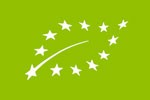
Handed down from generation to generation, Coutet has been intimately related to the David Beaulieu family for at least 400 years. A visit to this domain allows one to enter another world, one that is rich in history but also environmentally; Being free from any trace of chemical activities, Coutet’s land is currently being studied by various scientific bodies. This is probably the first organic Château of the region if not of France. The Château wine is predominantly produced from Merlot but also from local varieties hardly grown nowadays such as Bouchet and Prayssac. The soils of Chateau Coutet vineyard is established on the first hill of Saint-Émilion, half a kilometre away from the village but with distinct terroir from the plateau to the foot of the slopes where Coutet’s closest neighbours are amongst others Beauséjour Bécot and Angélus. The Château has all the credentials to deserve greater recognition but the David Beauliau has always preferred playing a low profile focusing on their land and preserving their heritage to make authentic wines.
Château Fontbaude – Côtes de Castillon www.fontbaude.com – 
Brothers Christian and Yannick are two passionate vignerons at the helm of this family property established in 1969 by their father. They were convinced about the benefits of organic viticulture way before gaining their certification in 2012. The Tradition is unoaked whilst the Vieilles Vignes are up to 50 years old and barrel matured for 12 months.
BORDEAUX – POMEROL
VIGNOBLES BOULDY – Saint Emilion – Pomerol 
www.chateaubellegravepomerol.com A small family holding of 8.2 hectares. Château Bellegrave takes its name from Pomerol’s soils, which are composed of « Grave » (stones). The estate produces very consistent quality wines enhanced by owner Jean-Marc’s advocation to organic farming after gaining certification in 2009. The Chateau des Jacobins is from lighter soils making for an elegant Pomerol and Château Bellegrave from heavier soils display great intensity and depth. Château des Matignon is a 1.3-hectare sand and gravel plateau to the west of the Saint Emilion appellation. The vines are averaging 40 years of age and made up of Merlot (70%) and Cabernet Franc (30%). The wine is matured in oak barrels for 20 to 22 months to make for an exquisite approachable wine upon release.
BORDEAUX – CANON FRONSAC
VIGNOBLES PONTY – Canon Fronsac  www.vignoblesponty.com Their story starts in 1905, with their great grandfather, Victor Ponty. When Victor stepped in Fronsac, little did he know those vineyards were often claimed to be the original birthplace of Bordeaux wine. Over his encounters, he learned how the wine made in Fronsac used to be reserved for the French kings, and how the Duke de Richelieu lived here overlooking the village. But first, he opened his eyes wide, and absorbed the beautiful, rolling hills covered with vines. From the top, you can see the river Dordogne flowing. Wines are crafted with a great deal of care from their (spell check) own vineyards. Most of the work is still manual including the harvest work. The Grand Renouil with its fine balance is often rated amongst the top Canon Fronsac and offers an unbeatable right bank Merlot wine.
www.vignoblesponty.com Their story starts in 1905, with their great grandfather, Victor Ponty. When Victor stepped in Fronsac, little did he know those vineyards were often claimed to be the original birthplace of Bordeaux wine. Over his encounters, he learned how the wine made in Fronsac used to be reserved for the French kings, and how the Duke de Richelieu lived here overlooking the village. But first, he opened his eyes wide, and absorbed the beautiful, rolling hills covered with vines. From the top, you can see the river Dordogne flowing. Wines are crafted with a great deal of care from their (spell check) own vineyards. Most of the work is still manual including the harvest work. The Grand Renouil with its fine balance is often rated amongst the top Canon Fronsac and offers an unbeatable right bank Merlot wine.
COTES DE BLAYE
CHÂTEAU MAGDELEINE-BOUHOU – Cars 
The very first trace of Chateau Magdeleine Bouhou, dates back to the 18th century. “Bouhou”, bouhar in Gascon, means to breathe. A name undoubtedly inspired by the winds of the estuary blowing strongly at this place. So strong that it alone could blow the local boha, or bagpipe. As early as 1868, Château Magdeleine Bouhou was classified Premier Cru Bourgeois in the second edition of “Bordeaux et ses vins” (Ed. Féret). In 1908, Jean Chaumet bought the property. He and his descendants were not shy in bringing modernity (bottling at the Château was as early as 1929) whilst ensuring that traditions and respect of the environment remain close to their heart. Today, Muriel Chaumet at the helm of this 17ha domain since 2004 is the 4th generation and continues to produce wines of terroir with a quality conscious approach. 2019 is the first year of organic conversion and Stephane Derenoncourt since 2010 is acting as consultant. The wine is solely red and in 2018 the Château started to produced single varietal (falling thus under Vin de France appellation) wines under La Petite Madeleine label (a clin d’oeil to Proust novel as to link the fruit profile of the wines resembling childhood memories). The wines offered in 150cl and made without added sulfites has been met with success from restaurateurs.
This historical property located in Pomport dates from the 18th century. Benoit Beigner is the 6th generation of wine growers. He is a highly trained oenologist with a wide range of experiences gained over the years. He is closely attached to his region and has long known of the potential of Château Pecany land as his grand-parents in the early 1900 already acquired some parcels from the then Château owner to make their own wines. In 2012 Benoit took the decision to acquire the domain. He was so convinced of the potential of the land that he decided to commit his passion and efforts into the land by opting for organic farming to best express the potential. The wines have since gained in recognition for their sincerity and typicity.
Château Barouillet has been owned by the family for 8 generations. Located at Pomport, Dordogne, in the middle of Monbazillac appellation southern Bergerac the vineyard consists of 45 hectares, falling mainly under the Montbazillac, Bergerac, Pécharmant appellations. The domain was certified organic since 2014 and Vincent Alexis having succeded his father, is adamant the wines should be as natural as realistically feasible. His red wines are non-filtered without added sulfites.
www.châteaudesmayragues.com Laurence et Alan Geddes acquired this domain in 1980. They restructured this listed Château (XIIe-XVIes.), reorganized the vineyards and created a cellar. They decided to conduct their 12 ha of vines biodynamically since 1999, with a focus on local indigenous varieties (duras, braucol, mauzac and loin de l’oeil). They produce authentic wines with an offering that is decidedly for those looking with a range with a difference. The Braucol is the local name for the Fer Servandou grape. The Len de Lel /Loin de L’oeil variety whose name refers to the bunches long stems which are far from the vine buds.
A family domain in the Aveyron region in the Marcillac appelation. This domain has made a name for itself for it produces wines represent personality using the native grape Fer Servandou also locally called Mansois; an untamed tannic variety of Marcillac. In the local dialect ‘Servandou’ means ‘well suited to conservation’ a name probably referring to the wine aptitude to age. The Cuvée Vieille Vignes made from 50years old vines has indeed all the quality attributes to age and develop gracefully over the years. It is however not made every year. On the contrary, the Clos del Pais offers all the juicy and red berry fruits that is so appealing in its youth. A great ‘vin de soif’ with a definite difference.
DOMAINE DAMIENS – Madiran – Pacherenc du Vic Bilh – 
www.domainedamiens.e-monsite.com
Pierre-Michel and his sister Marie have very diligently taken over the family estate. The domain was set up by André, their father, in the early 1970’s. A young vigneron, André started from scratch but was eager to contribute to Madiran wine quality revival helping the region to gain its appelation status in 1975. Today the domain is recognised for the quality of both his Madiran and Pacherenc Vic Bilh production and is certified organic.
DOMAINE CAMIN LARREDYA
The Grussautes have a small but remarkable vineyard situated in the Chapelle de Rousse area of Jurançon. The word “Camin” used instead of Domaine is the local dialect for chemin or road. The vineyard is planted mainly to Petit Manseng with some Gros Manseng and Petit Courbu and Camaralet. Jean-Marc Grussaute has farmed organically since 2007. Jean-Marc names his wines after the vineyard parcels. The Jurançon Sec which is called La Part Davan, blends two thirds Gros Manseng with Petit Manseng and a small amount of Petit Courbu.. The wine undergoes a “maceration pellicullaire” before fermentation in stainless steel tanks and foudres. Then the wine is kept “sur lie” for a few months before release. The Jurançon Moelleux “Au Capceu” is made from 100% Petit Manseng. The wine is fermented in barrel (50% new) and rests there for eighteen months “sur lie”. The harvest is done with successive pickings resulting in low yields
A discreet couple Catherine and Jean-Mary Le Bihan challenged themselves to purchase parcels or small wineries here and there since back in the early 2000s. Right from the start they decided upon producing organic wines before moving to biodynamie as to be in adequation with their values and wish to produce wines as close to being natural as possible. The wines are expressive and terroir oriented.
